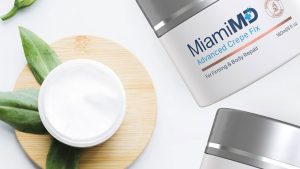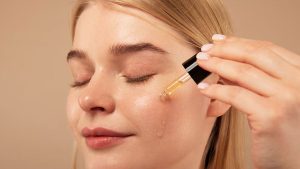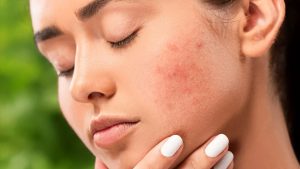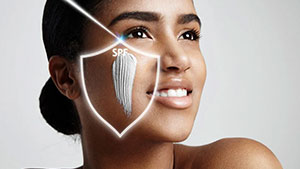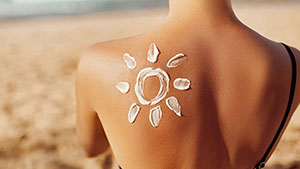How To Apply Eye Cream
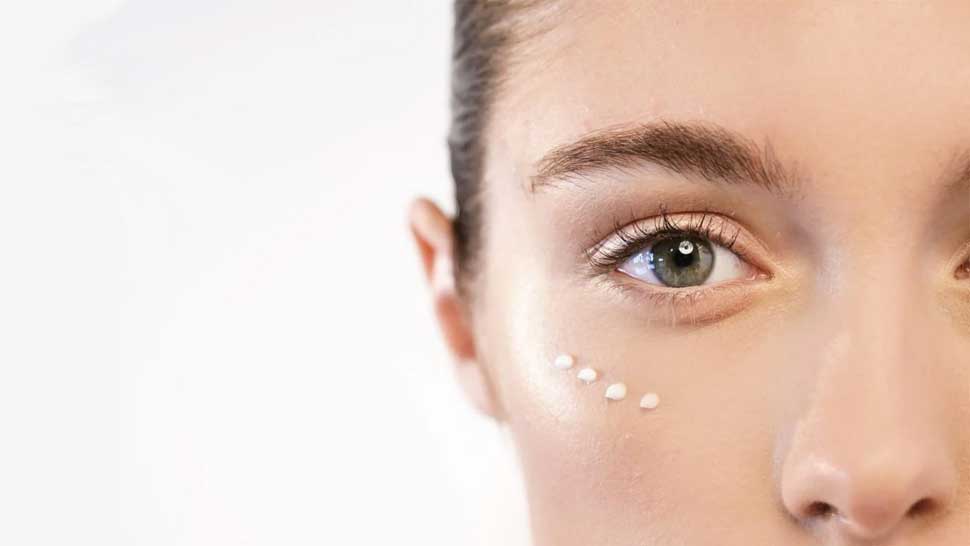
As we age, the skin around our eyes often shows the first signs of aging. This delicate area requires extra care and attention. Eye creams are specifically designed to target the unique concerns that come with aging, like fine lines, puffiness, and dark circles.
Today, we’ll explore what eye cream is, why it’s a must-have in your skincare routine and how to apply it for the best results.
What Is Eye Cream?
Eye cream is a special type of moisturizer designed for the skin around your eyes. The formula is made to be gentle yet effective — often including ingredients like hyaluronic acid for hydration, peptides to improve skin elasticity, and antioxidants to fight free radicals.
Unlike regular face moisturizers, eye creams are tailored to address specific concerns such as dark circles, puffiness, and fine lines. “If used consistently, eye creams can effectively target common skincare concerns. They aim to hydrate, reduce puffiness, and some claim to diminish the appearance of fine lines and dark circles,” says consultant dermatologist, Dr Anjali Mahto (1).
There’s a wide variety of eye creams on the market, from lightweight gels for daytime use to richer balms for nighttime care. Choosing the right eye cream for your needs can make a noticeable difference in how refreshed and youthful your eyes look.
Why Use an Eye Cream?
The skin around your eyes is thinner and more sensitive than other parts of your face, making it more prone to showing signs of aging and fatigue. Eye creams are formulated to address these issues in ways regular moisturizers might not.
Using an eye cream can improve hydration levels, which helps plump the skin and reduce the appearance of fine lines. Plus, the right ingredients can support collagen production, strengthen the skin barrier, and reduce inflammation caused by lack of sleep, stress, or environmental factors.
In fact, research even shows that some eye creams can help skin elasticity wrinkle reduction, and hyperpigmentation surrounding the eye area (2).
When Should You Start Using Eye Cream?
It’s never too early to start using an eye cream. While younger women might use it as a preventive measure, women with more mature skin often benefit from eye creams that address existing concerns, such as crow’s feet or loss of elasticity.
Consider incorporating an eye cream into your skincare routine as early as your 30s or when you notice changes around your eyes.
What Are the Benefits of Eye Cream?
Eye creams don’t just target one concern. They work holistically to enhance the skin around your eyes. A good eye cream can transform your eye area by addressing fine lines, dryness, dark circles, and puffiness — helping you look refreshed, youthful, and well-rested.
Minimize the Look of Fine Lines
The appearance of wrinkles and fine lines, often called crow’s feet, in the delicate eye area is a common concern as we age.
Eye creams with anti-aging ingredients like retinol and peptides can effectively reduce these signs of aging:
- Retinol: Boosts collagen production, a key protein that keeps skin firm and elastic. Regular use can improve skin texture and reduce the depth of wrinkles. “It is generally safe to use retinol on the under-eye area, but it must be approached with caution,” warns plastic surgeon Dr. Williams, “Choose a formulation specifically designed for sensitive areas and start with a lower concentration to gauge your skin’s tolerance,” (3).
- Peptides: These building blocks of proteins strengthen the skin and improve its elasticity, making fine lines less visible over time.
- Hydration: Well-moisturized skin appears plumper, which helps diminish the appearance of lines and wrinkles. Ingredients like hyaluronic acid attract water to the skin, keeping it supple and smooth.
But remember, consistency is key. Use your eye cream daily to see noticeable improvements in the firmness and smoothness of the skin around your eyes.
Nourish Delicate Skin
The skin around the eyes is thinner and more fragile than other areas, making it prone to dryness and irritation. This delicate area lacks oil glands, so it doesn’t produce as much natural moisture. Eye creams with deeply hydrating ingredients ensure this sensitive area stays nourished and protected.
- Ceramides: Strengthen the skin barrier and lock in moisture, preventing dryness.
- Shea Butter: A natural emollient that soothes and softens dry skin while providing lasting hydration.
- Hyaluronic Acid: Attracts and retains water, delivering intense hydration that keeps the skin plump and youthful-looking. “ Hyaluronic acid is great in an eye cream to lock in moisture, minimize the dehydration lines that can form, and increase the skin’s natural glow,” board-certified dermatologist Dr. Engelman says (4).
Proper hydration also enhances the skin’s resilience, making it better equipped to handle environmental stressors like cold weather or pollution.
Brighten Dark Circles
Dark circles are a common concern, often caused by a combination of factors: genetics, thin skin revealing blood vessels beneath, lack of sleep, and hyperpigmentation.
Eye creams with brightening ingredients can help improve the look of dark circles and make your eyes appear more awake:
- Vitamin C: A powerful antioxidant that helps fade the look of pigmentation and even out skin tone. It also helps protect the skin from free radical damage.
- Niacinamide (Vitamin B3): Reduces irritation, improves the look of skin tone, and lightens discoloration caused by sun damage or aging.
- Caffeine: Constricts blood vessels, reducing the appearance of bluish tones under the eyes caused by visible veins.
For best results, pair your brightening eye cream with lifestyle adjustments, like getting enough sleep and staying hydrated, to tackle dark circles from the inside out.
Reduce Puffiness
Morning puffiness around the eyes can result from fluid retention, allergies, or lack of sleep. Eye creams formulated with de-puffing ingredients can help calm the swelling and restore a refreshed look:
- Cucumber Extract: Naturally soothing, it helps reduce irritation and puffiness.
- Green Tea Extract: Contains antioxidants and soothing properties that help reduce swelling.
- Caffeine: Stimulates circulation, helping to flush out excess fluid that causes puffiness.
For an extra cooling effect, store your eye cream in the fridge. The cold temperature constricts blood vessels and reduces swelling more quickly. Some eye creams also come with a metal applicator, which can massage the area gently while applying the cream, further helping to reduce puffiness.
How Should You Apply Eye Cream?
Now that we’ve covered the basics, here’s what to know about properly applying your eye cream for optimal results.
After Serum, Before Moisturizer
The order of your skincare routine matters. Apply your eye cream after your serum but before your moisturizer. This layering ensures the active ingredients in the eye cream can penetrate the skin effectively.
“Once a day is enough, but it can be applied twice a day,” consultant dermatologist Dr Shaaira Nasir says. ” If the eye cream is thick, it may be better used at nightto avoid looking greasy” (5).
Use a Gentle Hand
The skin around your eyes is very delicate, so use a gentle touch. You don’t need a lot of product — just a small, pea-sized amount is enough for both eyes.
Because the skin around your eyes is so delicate, use your ring finger to apply the cream. This finger applies the least pressure, which helps prevent tugging or irritation. “I recommend applying eye cream with your ring finger which provides the least amount of pressure on the skin, and gently patting the cream into the skin,” says Dr. Robinson, M.D. (6).
Pat, Don’t Rub
When applying eye cream, it’s best to pat it in with your ring finger. This finger is the weakest, so it’s less likely to pull or tug at the skin. Rubbing can be too rough and might cause irritation. Start at the inner corner of your eye and move outward, ensuring even application.
How Much Eye Cream Should You Use?
A little goes a long way. Use a pea-sized amount for both eyes. Applying too much can overload the skin and even cause irritation.
What Are Other Tips for Getting the Most Out of Your Eye Cream?
Aside from general guidelines, there are also a few other tips that can help you make the most of your eye products.
Apply Twice a Day, If Suitable
Most eye creams can be applied in the morning and at night, but always check the product instructions. Daytime formulas often include SPF or lightweight textures, while nighttime creams are usually richer.
Pair With Healthy Habits
Eye cream works best when combined with a healthy lifestyle. Stay hydrated, get enough sleep, and wear sunglasses to protect your eyes from UV damage.
Don’t Forget Sun Protection
The skin around your eyes is prone to sun damage, which can accelerate aging. Pair your daytime eye cream with sunscreen or choose an eye cream with SPF to protect this sensitive area.
The Bottom Line
Using an eye cream is a simple but powerful step in your skincare routine. It helps minimize fine lines, nourish delicate skin, brighten dark circles, and reduce puffiness. Just remember to apply it gently and in the right order for the best results!
Sources:
- A dermatologist’s guide to eye cream: What does it do? | The Independent
- International Journal of Women’s Dermatology | LWW
- The very best retinol eye creams in 2024 and how to use them | Harper’s Bazaar
- 11 Best Eye Cream for Wrinkles to Address Crow’s Feet and Fine Lines | Vogue
- Do eye creams even work? | HELLO
- Exactly How to Apply Eye Cream, According to Dermatologists | Shape
